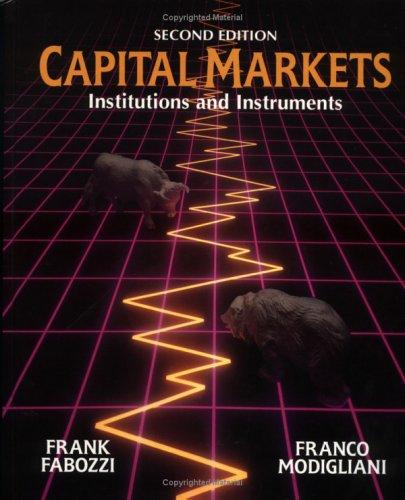
3. The 3 bonds have the following features: HSU Bond C 8% YTM (p.a.) Coupon (p.a.) Maturity HSU Bond A 8% 9% 5 HSU Bond B 8% 8% 0% 10 10 In the following table, it is the prices of these three bonds at 5% & 11% yield (YTM) comparing to their valuations when the required yield (YTM) was 8%p.a.: YTM 5% 11% HSU Bond A $1,175.04 $ $924.62 HSU Bond B $$1,233.84 $ $820.74 HSU Bond C $610.27 $342.73 | (A) Explain why each of these bonds has a different degree of sensitivity to a +/- 3% change in required yield (YTM). Give your reasoning in terms of volatility based on maturity and coupon effect. (2 marks) (B) Calculate the duration of HSU Bond A, B & C? (4 marks) As an alternative, DC has been invited to invest $1 million in a 10-year bond of a second firm, HKUST. HKSTU bonds are similar in risk to "HSU Bond B": they both pay 8%p.a. coupon for 10 years, but HKUST bonds pay coupon annually, not semi-annually as in the case of HSU. The HKUST bonds are priced 99% (or $990 per $1,000 face value). HSU Bond A matures in 5 years and pays a 9%p.a. coupon on a $1,000 face value bond). HSU Bond B matures in 10 years, pays an 8%p.a. coupon yield and is being offered at PAR. HSU Bond C is a zero-coupon bond but will pay the face amount of $1,000 per bond at maturity in 10 years. (C) What yield to maturity (YTM) is implied by the HKUST bond? Compare this yield to the 8%p.a. of the HSMC semi-annual coupon bond (Bond B) above. In which bond should DC invest? [Note : use YTM = [C+(F- P)]/(F+P)/2]] (4 marks) 3. The 3 bonds have the following features: HSU Bond C 8% YTM (p.a.) Coupon (p.a.) Maturity HSU Bond A 8% 9% 5 HSU Bond B 8% 8% 0% 10 10 In the following table, it is the prices of these three bonds at 5% & 11% yield (YTM) comparing to their valuations when the required yield (YTM) was 8%p.a.: YTM 5% 11% HSU Bond A $1,175.04 $ $924.62 HSU Bond B $$1,233.84 $ $820.74 HSU Bond C $610.27 $342.73 | (A) Explain why each of these bonds has a different degree of sensitivity to a +/- 3% change in required yield (YTM). Give your reasoning in terms of volatility based on maturity and coupon effect. (2 marks) (B) Calculate the duration of HSU Bond A, B & C? (4 marks) As an alternative, DC has been invited to invest $1 million in a 10-year bond of a second firm, HKUST. HKSTU bonds are similar in risk to "HSU Bond B": they both pay 8%p.a. coupon for 10 years, but HKUST bonds pay coupon annually, not semi-annually as in the case of HSU. The HKUST bonds are priced 99% (or $990 per $1,000 face value). HSU Bond A matures in 5 years and pays a 9%p.a. coupon on a $1,000 face value bond). HSU Bond B matures in 10 years, pays an 8%p.a. coupon yield and is being offered at PAR. HSU Bond C is a zero-coupon bond but will pay the face amount of $1,000 per bond at maturity in 10 years. (C) What yield to maturity (YTM) is implied by the HKUST bond? Compare this yield to the 8%p.a. of the HSMC semi-annual coupon bond (Bond B) above. In which bond should DC invest? [Note : use YTM = [C+(F- P)]/(F+P)/2]] (4 marks)







